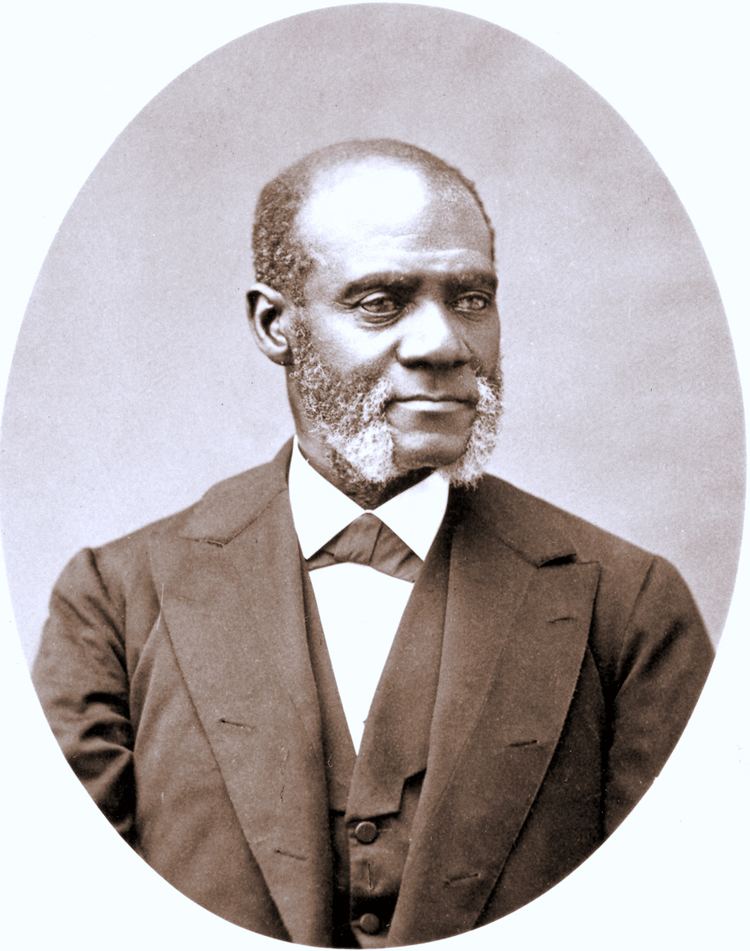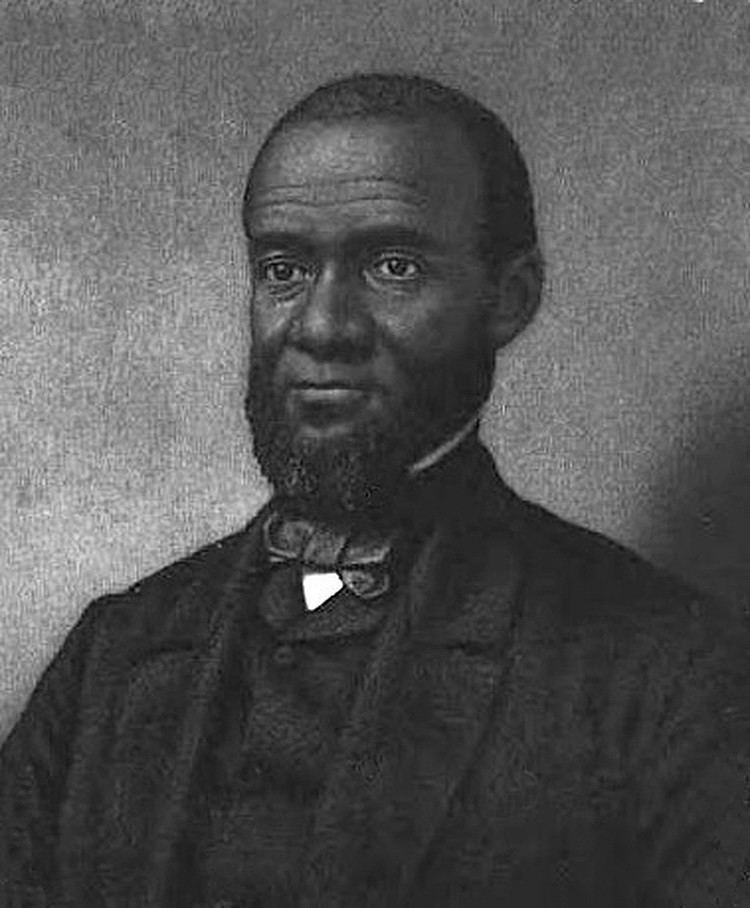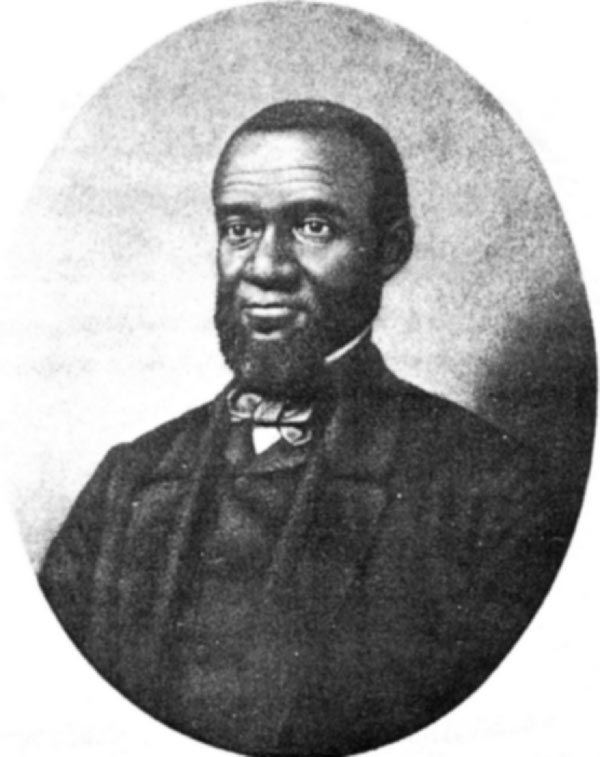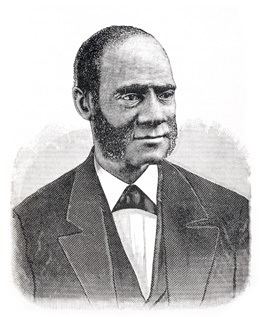Nationality American Education African Free School | Name Henry Garnet Alma mater African Free School | |
 | ||
Occupation Minister (Christianity), Abolitionist Parents Henrietta Trusty, George Trusty Books The Past and the Present C, Walker's Appeal - with a Bri, Walker's Appeal, Walker's Appeal and Garnet's, Walker's Appeal - with a Bri Similar People David Walker, William Lloyd Garrison, Frederick Douglass, Denmark Vesey, William Still | ||
Black Man With A Gun Podcast #510 - Henry Highland Garnet
Henry Highland Garnet (December 23, 1815 – February 13, 1882) was an African-American abolitionist, minister, educator and orator. Having escaped with his family as a child from slavery in Maryland, he grew up in New York City. He was educated at the African Free School and other institutions, and became an advocate of militant abolitionism. He became a minister and based his drive for abolitionism in religion.
Contents
- Black Man With A Gun Podcast 510 Henry Highland Garnet
- Henry highland garnet 1843 speech to u s slaves hear and read the call to rebellion
- Early life and education
- Marriage and family
- Ministry
- Anti slavery role
- Later life
- Legacy and honors
- References

Garnet was a prominent member of the movement that led beyond moral suasion toward more political action. Renowned for his skills as a public speaker, he urged blacks to take action and claim their own destinies. For a period, he supported emigration of American free blacks to Mexico, Liberia, or the West Indies, but the American Civil War ended that effort. In 1841 he married abolitionist Julia Williams and they had a family. They moved to Jamaica in 1852 to serve as missionaries and educators. After the war, the couple worked in Washington, DC.

Henry highland garnet 1843 speech to u s slaves hear and read the call to rebellion
Early life and education

Henry Garnet was born into slavery in New Market, Kent County, Maryland, on December 23, 1815. According to James McCune Smith, Garnet's father was George Trusty and his enslaved mother was "a woman of extraordinary energy." In 1824, the family, which included a total of 11 members, secured permission to attend a funeral, and from there, they all escaped in a covered wagon, first reaching Wilmington, Delaware.
When Garnet was ten years old, his family reunited and moved to New York City, where from 1826 through 1833, Garnet attended the African Free School, and the Phoenix High School for Colored Youth. While in school, Garnet began his career in abolitionism. His classmates at the African Free School included Charles L. Reason, George T. Downing, and Ira Aldridge.
In 1834, Garnet joined William H. Day and David Ruggles to establish the all-male Garrison Literary and Benevolent Association. It garnered mass support among whites, but the club ultimately had to move due to racist feelings. One year later, in 1835, he started studies at the Noyes Academy in Canaan, New Hampshire. Due to his abolitionist activities, Garnet was driven away from the Noyes Academy by an angry segregationist mob. It forced the academy to close.
He completed his education at the Oneida Theological Institute in Whitesboro, New York, which had recently admitted all races. Here he was acclaimed for his wit, brilliance, and rhetorical skills. The year after graduation in 1839, he injured his knee playing sports. It never recovered, and his lower leg had to be amputated in 1841.
Marriage and family
In 1841 Garnet married Julia Williams, whom he had met as a fellow student at the Noyes Academy. She had also completed her education at the Oneida Institute. Together they had three children, only one of whom survived to adulthood.
Ministry
In 1839, Garnet moved with his family to Troy, New York, where he taught school and studied theology. In 1842, Garnet became pastor of the Liberty Street Presbyterian church, a position he held for six years. During this time, he published papers that combined religious and abolitionist themes. Closely identifying with the church, Garnet supported the temperance movement and became a strong advocate of political antislavery.
He later returned to New York City, where he joined the American Anti-Slavery Society and frequently spoke at abolitionist conferences. One of his most famous speeches, "Call to Rebellion," was delivered August 1843 to the National Negro Convention in Buffalo, New York. "Upon the conclusion of the Negro national convention of 1843, Garnet led a state convention of Negroes assembled in Rochester."
These conventions by black activists were called to work for abolition and equal rights. Garnet said that slaves should act for themselves to achieve total emancipation. He promoted an armed rebellion as the most effective way to end slavery. Frederick Douglass and William Lloyd Garrison, along with many other abolitionists both black and white, thought Garnet's ideas were too radical and could damage the cause by arousing too much fear and resistance among whites. Garnet supported the Liberty Party, a party of reform that was eventually absorbed into the Republican Party. Garnet disagreed with the later Republicans.
Anti-slavery role
Women's participation in the abolitionist movement was controversial and resulted in a split in the American Anti-Slavery Society. Arthur Tappan, Lewis Tappan "and a group of black ministers, including Henry Highland Garnet" founded the American and Foreign Anti-Slavery Society (AFAS). It "was committed to political abolitionism and to male leadership at the top levels."
By 1849 Garnet began to support emigration of blacks to Mexico, Liberia, or the West Indies, where he thought they would have more opportunities. In support of this, he founded the African Civilization Society. Similar to the British African Aid society, it sought to establish a West African colony in Yoruba (present-day Nigeria). Garnet advocated a kind of black nationalism in the United States, which included establishing separate sections of the nation to be black colonies. Other prominent members of this movement included minister Daniel Payne, J. Sella Martin, Rufus L. Perry, Henry M. Wilson, and Amos N. Freeman.
In 1850, Garnet went to Great Britain at the invitation of Anna Richardson of the Free produce movement, which opposed slavery by rejecting the use of products produced by slave labor. He was a popular lecturer, and spent two and a half years lecturing.
In 1852 Garnet was sent to Kingston, Jamaica, as a missionary. He and his family spent three years there; his wife Julia Garnet led an industrial school for girls. Garnet had health problems that led to the family returning to the United States.
When the American Civil War started, Garnet's hopes ended for emigration as a solution for American blacks. He worked to organize black army units to aid the Union cause. In the three-day New York draft riots of July 1863, mobs attacked blacks and black-owned buildings. Garnet and his family escaped attack because his daughter quickly chopped their nameplate off their door before the mobs found them. He organized a committee for sick soldiers and served as almoner to the New York Benevolent Society for victims of the mob.
When the federal government approved creating black units, Garnet helped with recruiting United States Colored Troops. He moved with his family to Washington, DC, so that he could support the black soldiers and the war effort. He preached to many of them while serving as pastor of the prominent Liberty (Fifteenth) Street Presbyterian Church from 1864 until 1866. During this time, Garnet was the first black minister to preach to the US House of Representatives, addressing them on 12 February 1865 about the end of slavery .
Later life
After the war in 1868, Garnet was appointed president of Avery College in Pittsburgh, Pennsylvania. Later he returned to New York City as a pastor at the Shiloh Presbyterian Church (formerly the First Colored Presbyterian Church, and now St. James Presbyterian Church in Harlem).
His first wife Julia died. In 1879, Garnet married Sarah Smith Tompkins, who was a New York teacher and school principal, suffragist, and community organizer.
Garnet’s last wish was to go to Liberia to live, even for a few weeks, and to die there. He was appointed as the U.S. Minister to Liberia in late 1881, and died in Africa two months later. Garnet was given a state funeral by the Liberian government and was buried at Palm Grove Cemetery in Monrovia. Frederick Douglass, who had not been on speaking terms with Garnet for many years because of their differences, still mourned Garnet's passing and noted his achievements.
